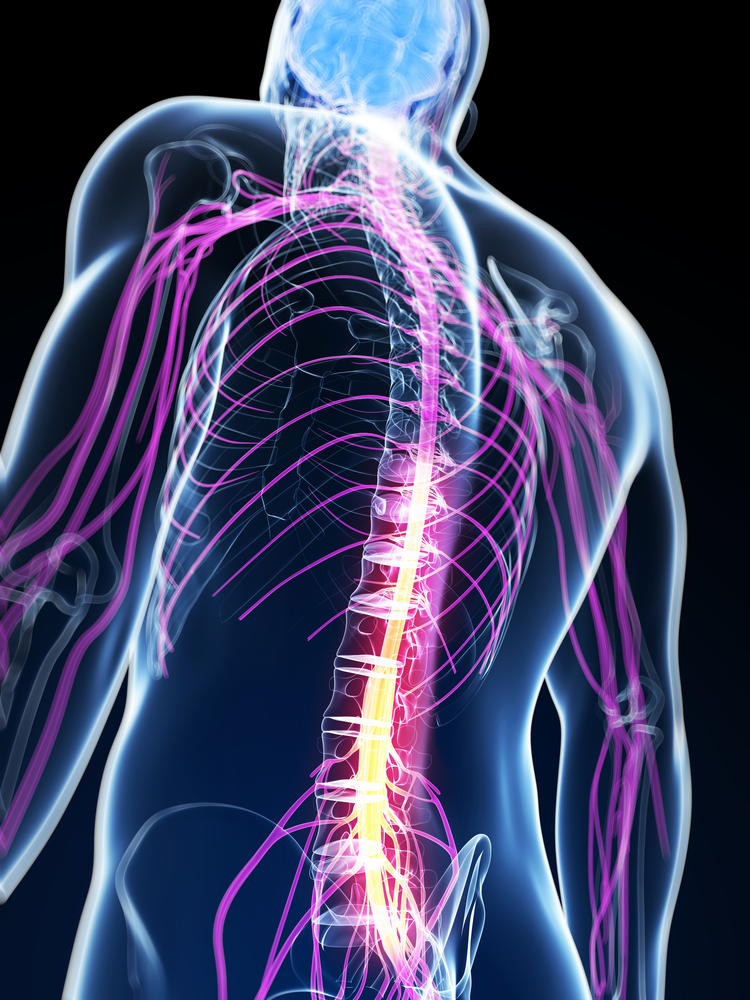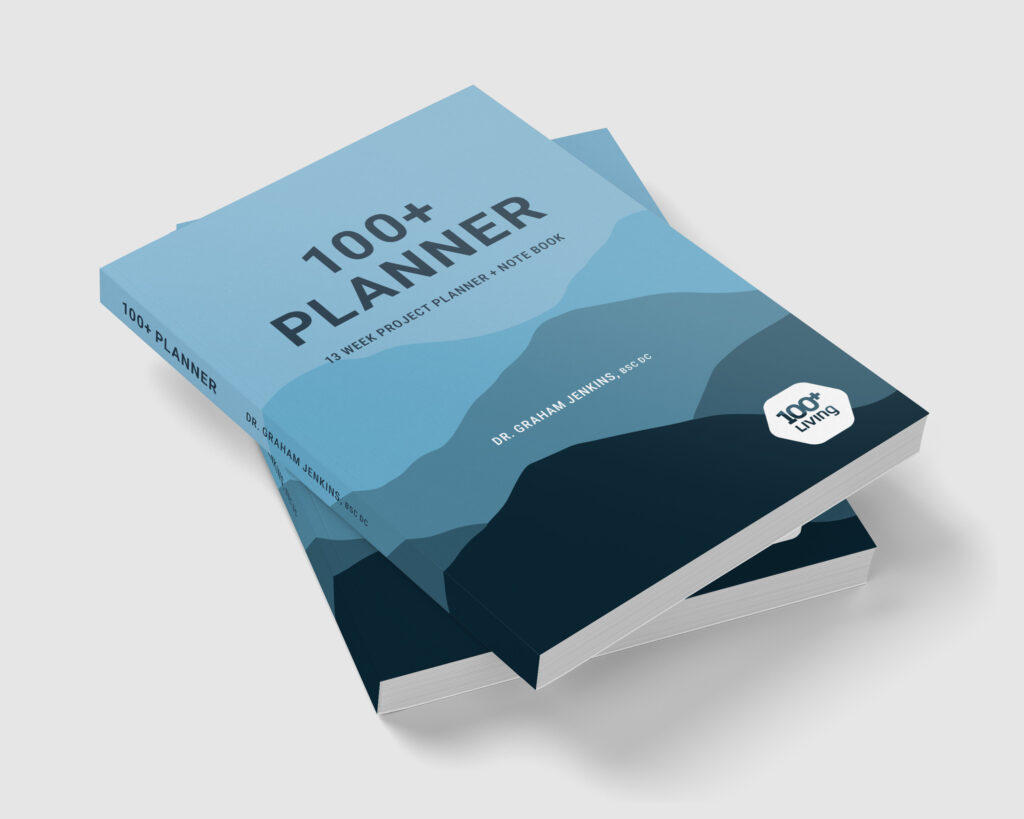Today I want to dive deep into a topic that’s often overlooked by most people when they are looking to get healthy: posture. When we think of health and fitness, we often focus on exercise, nutrition, or sleep, but posture is just as important. Proper posture not only affects how we look and feel—it also has a profound impact on our ability to move, react, and stay healthy throughout our lives. In fact, research shows that spinal alignment plays a crucial role in performance and longevity, key themes of the 100+ Living Plan.
This blog will highlight the importance of posture, explore cutting-edge research, such as Dr. Deed Harrison’s findings on cervical curve alignment, and offer practical tips—including the “Titanic” exercise—to help correct anterior head carriage and rolled shoulders. You’ll discover how small improvements to your posture can align perfectly with the principles of the 100+ Living Plan, helping you move better, live longer, and thrive in everything you do.
Posture and Its Impact on Reaction Time and Performance
Research by Dr. Deed Harrison, a prominent figure in Chiropractic BioPhysics (CBP), revealed that spinal alignment impacts not only comfort and aesthetics but also athletic performance. In his research, Harrison found a direct relationship between the cervical spine’s natural curve and improvements in reaction time and vertical jump ability. When the spine is aligned properly, nerve signals travel more efficiently, supporting faster reflexes and better coordination. This is especially relevant for athletes—but it’s also important for anyone looking to maintain functional movement as they age.
An improperly aligned spine—particularly one with anterior head carriage—can lead to neurological interference, slowing down reaction time and impairing muscle performance. Whether you’re playing sports, walking your dog, or simply reacting to sudden movements in daily life, good posture allows you to move with agility and confidence. These findings align perfectly with the principles of the 100+ Living Plan: small, strategic changes, such as improving posture, can dramatically impact your quality of life, performance, and longevity.
Why Posture Matters for Longevity
Posture is about much more than standing straight. Over time, poor posture can lead to chronic pain, limited mobility, and reduced respiratory function. Forward head posture and rolled shoulders—both common due to the amount of time we spend on screens—can result in imbalanced muscle function, leading to discomfort and fatigue. Poor spinal alignment can also compress nerves, reducing the efficiency of nerve signaling throughout the body.
Correcting these issues early is essential for avoiding long-term problems. As we emphasize in the 100+ Living Plan, the goal is to preserve and enhance your health today, so you can enjoy an active, pain-free life for decades to come. Improving your posture aligns with this philosophy by preventing the physical decline associated with aging and helping you stay active, mobile, and pain-free.
How the Titanic Exercise Can Help Fix Forward Head and Shoulder Position
One of the most effective ways to correct anterior head carriage and rounded shoulders is a posture correction technique I like to call the “Titanic” exercise. Named after the iconic scene from the movie Titanic—where the characters stand at the bow of the ship with their arms spread wide—this exercise is perfect for counteracting the effects of sitting and slouching.
Here’s how to perform it:
- Start in a standing position, feet hip-width apart.
- Extend your arms out to the sides, palms facing forward, and gently pull your shoulder blades together. Imagine trying to squeeze a pencil between your shoulder blades.
- Lift your chest upward, engaging your upper back muscles to open up your chest.
- Gently pull your chin back so your ears align with your shoulders, correcting anterior head posture.
- Hold this position for 5 to 10 seconds, breathing deeply, and then release. Repeat up to 20 times and do this 3 to 5 times a day.
The Titanic exercise helps open up the chest, strengthens the upper back muscles, and trains your body to maintain proper alignment throughout the day. When performed regularly, it can significantly reduce forward head posture and improve shoulder positioning, bringing the body back into balance. This exercise aligns perfectly with the fitness aspect of the 100+ Living Plan, reinforcing the idea that small, consistent habits lead to long-term success.
The Neurological Benefits of Correcting Posture
When we improve our posture, we aren’t just making cosmetic changes—we are also enhancing the way our nervous system functions. The spinal cord runs through the vertebrae, carrying vital signals from the brain to every organ, muscle, and tissue in the body. Misalignments in the spine can create interference in this communication, leading to discomfort, reduced mobility, and impaired function.
The Harrison study highlights the importance of maintaining proper cervical alignment for nerve function. When the spine is out of alignment, it creates tension in the muscles and connective tissues, making everyday movements more difficult. This can lead to fatigue, poor coordination, and even decreased energy levels—issues that many people mistakenly attribute to aging. By correcting posture, we free up the nervous system, allowing it to function at peak efficiency, which aligns perfectly with the neurological principles of the 100+ Living Plan.
Posture and Emotional Health: Standing Tall to Feel Better
Posture also affects how we feel emotionally. There is growing evidence that standing tall with an open posture can reduce feelings of stress and anxiety. Amy Cuddy, a social psychologist, has conducted research showing that posture influences hormone levels, with expansive postures increasing testosterone and reducing cortisol—the stress hormone.
Slouching or hunching over can make us feel fatigued and mentally overwhelmed, while standing tall promotes feelings of confidence and well-being. As part of the 100+ Living Plan, maintaining good posture is not just about physical health; it’s also about supporting a positive mental and emotional state. This holistic approach ensures that you thrive not only physically but also mentally and emotionally, setting the foundation for a truly long, vibrant life.
Incorporating Posture Work into Your Daily Routine
Improving your posture doesn’t require hours of effort—it’s about making small, intentional adjustments throughout the day. Here are a few practical tips to incorporate posture correction into your routine:
- Set reminders on your phone or computer to check your posture every hour.
- Use ergonomic tools, such as a standing desk or lumbar support cushion, to encourage proper alignment.
- Incorporate stretches like the Titanic exercise into your daily routine to open up the chest and reduce tension in the upper back.
- Visit a certified Chiropractic BioPhysics (CBP) practitioner for spinal alignment assessments and personalized posture correction exercises.
Remember, the goal of the 100+ Living Plan is to build habits that support long-term health and longevity. Improving your posture may feel like a small change, but it’s one with far-reaching effects. When your body is aligned, you move better, feel better, and live better—both now and in the years to come.
Take Action Today for a Healthier Tomorrow
If you’re serious about improving your posture and living your best life, start by adding the Titanic exercise to your routine and paying attention to how you carry yourself throughout the day. Posture isn’t something that corrects itself overnight—it’s the result of small, intentional habits that accumulate over time. But the payoff is worth it. With improved alignment, you’ll move with greater ease, react faster, and feel more energetic—essential elements for living a 100+ life.
If you found this blog post helpful, please share it with your friends and family. Small changes like these are easier when we do them together. For more insights and strategies on how to live your absolute best life, check out my 100+ Living Plan book series on Amazon. And as always, if you have any questions or need guidance along the way, don’t hesitate to reach out—I’d love to help you on your journey toward living longer, healthier, and happier!
To your health and longevity,
Dr. Jenkins









